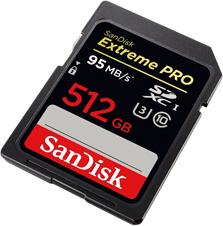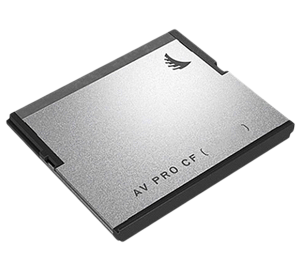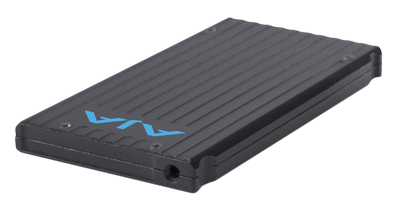Camera Media Buyers Guide
When capturing anything in camera we must have something to capture to. Whilst we have a very good guide for storage for computers here, professional cameras tend to use different media to record to and as such it’s important to know more about the storage required.
The simplest way of choosing media is actually often based on the camera manufacturers recommendations. Often a camera manufacturer will test and certify specific drives that they know are capable of recording from their cameras.
This guide will cover the different types of lenses, mounts and accessories that Scan Pro Video has to offer.
Why is choice of media so important?
A good example for understanding why storage is important, as given in our storage guide for post-production, is that modern professional cinema cameras capture video with very little compression applied. Less compression means larger files to manage throughout the workflow. As an example, ProRes 422 HQ when shooting at 1080p25 10 bit creates a massive 83GB/hr. If you are at a multi camera shoot with 4 hours of content from 4 cameras = 1.32TB.
It’s likely that when choosing media, like an SD card, for your camera you may get overwhelmed by all the numbers thrown about. The main number we want to focus on is the cards data rate. If a storage device is not fast enough to write or read all of the frames of your video it will result in what is known as dropped frames. Dropped frames are simply frames that the device was not fast enough to store or playback and they can result in jumpy, stutter or even black frames when viewed.
One thing to keep in mind, particularly with SD cards is that the manufacturers often use short or simple data when trying to find the maximum read write speed. This will give some SD cards what appear to be amazing data rates but when writing more complex or long data streams the data rate may drop. As such we always recommend looking for the continuous read/write speed values for any SD card as when capturing video we need more than just a few frames!
SD Cards
Secure Digital or SD cards are very small memory cards that are widely used in photography and video. They are very cheap per GB however are not the fastest available storage.
An important aspect to look out for when choosing an SD card is the bus speed. Often denoted as UHS-I or UHS-II (UHS meaning “Ultra High Speed”), the speed of the bus plays a large factor in whether the storage is suitable. UHS-I cards use a single row of connection pins and can have a bus speed of up to 104MB/s whilst UHS-II cards have two rows of pins and can reach up to 312MB/s.
Something to be aware of when using a UHS-II card is that they are backwards compatible however using a UHS-II card in a device that only supports UHS-I media will result in slower operation.
Again, manufacturers should provide information as to whether their devices support USH-I or UHS-II cards.

CFast
CFast is a variation of CompactFlash media which has been around for some time and those from photography backgrounds are likely familiar with. Like SSDs, are based on the SATA interface. This allows them to have a higher data rate than other types of media, for example SD cards, with some offering up to 560MB/s! CFast cards however tend to offer smaller storage sizes with the largest being 1TB. As a result they tend to be quite expensive per GB when compared to other storage solutions.

SSD
Solid Sate Drives or SSDs, when used with cameras either use a direct SATA connection or are housed in an external chassis which uses a USB or Thunderbolt connection to connect with your camera. These offer amazingly fast and relatively cheap storage for your camera allowing you to shoot continuously in high resolutions and frame rates without needing to swap drives all the time. These SSDs can offer up to 600MB/s read write speeds.

Proprietary media
Some camera manufacturers produce their own specific media drives for capturing to. AJA use their PAK recording media drives whilst RED use their RED MINI-MAG drives. We always recommend checking what media you require before purchasing as it’s not always possible to find an adapter to fit your media drive to other solutions.

The best camera media
There you have it, everything you need to know when choosing camera media. We hope you've found this buyers guide helpful. Don't hesitate to contact one of our friendly advisors for more advice if you still have questions on how to select the perfect camera media. If you’re all set to go we recommend checking out the camera media from these top brands.
VIEW RANGE